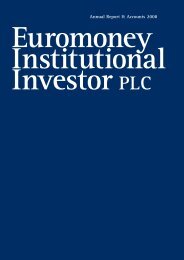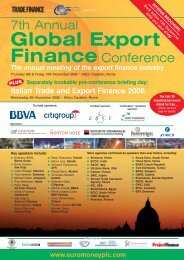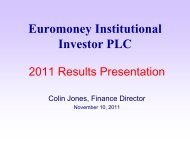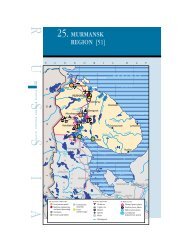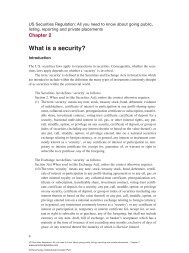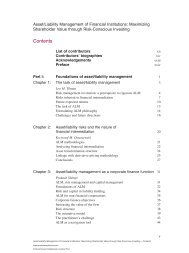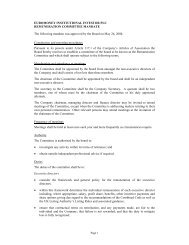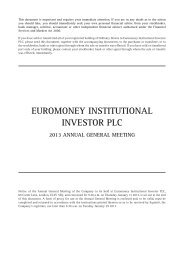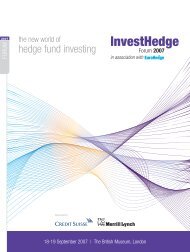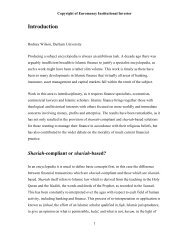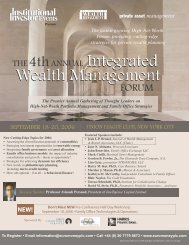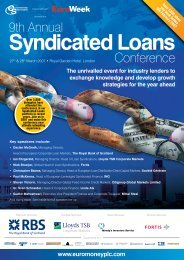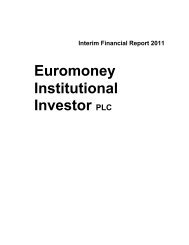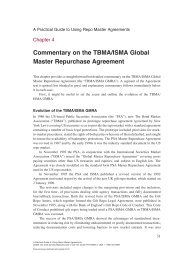Annual Report & Accounts 2012 - Euromoney Institutional Investor ...
Annual Report & Accounts 2012 - Euromoney Institutional Investor ...
Annual Report & Accounts 2012 - Euromoney Institutional Investor ...
You also want an ePaper? Increase the reach of your titles
YUMPU automatically turns print PDFs into web optimized ePapers that Google loves.
<strong>Euromoney</strong> <strong>Institutional</strong> <strong>Investor</strong> PLC <strong>Annual</strong> <strong>Report</strong> and <strong>Accounts</strong> <strong>2012</strong><br />
www.euromoneyplc.com<br />
The long-term incentive expense of £6.3 million<br />
(2011: £9.5 million before additional accelerated<br />
expense of £6.6 million) relates largely to the<br />
amortisation of the £30 million cost of the<br />
company’s CAP scheme. The reduction in this<br />
year’s expense partly reflects the acceleration of<br />
cost last year following the earlier than expected<br />
vesting of CAP 2010 (see below), as well as a<br />
credit of £1.8 million for options lapsing under<br />
CAP 2004. This early vesting means the CAP<br />
2010 expense for 2013 is expected to fall to<br />
approximately £2.0 million.<br />
Adjusted net finance costs for the group’s<br />
committed borrowing facility fell by £1.6 million<br />
to £5.6 million, reflecting the rapid reduction<br />
in net debt, most of it in the second half. The<br />
average cost of funds for the year fell to 4.8%<br />
(2011: 5.7%) as the group’s cheaper floating<br />
rate debt comprised a higher portion of total<br />
debt following the acquisition of NDR.<br />
Statutory net finance costs of £3.6 million (2011:<br />
£9.6 million) include a £2.9 million credit for the<br />
reduction in the expected consideration payable<br />
under the option agreement to acquire the<br />
outstanding 15% minority interest in NDR. The<br />
group acquired 85% of NDR for £68.5 million in<br />
August 2011 and the integration with the rest<br />
of the group, including the consolidation of the<br />
back office functions, the restructuring of the<br />
sales teams and the opening of a sales office<br />
in London was completed according to plan.<br />
However, it has taken longer than expected to<br />
convert the business to the standard subscription<br />
model used by BCA, and to expand the sales<br />
team. This, combined with difficult markets in<br />
the US, has meant that the revenue growth from<br />
NDR in <strong>2012</strong> has been less than that expected at<br />
the time of acquisition, although the outlook for<br />
growth in 2013 and beyond remains positive.<br />
As a result, the expected amount payable under<br />
the NDR earn-out arrangement has fallen to<br />
£7.9 million, of which £4.3 million is payable in<br />
The adjusted effective tax rate for the year<br />
was 22% against 26% in 2011. The tax rate<br />
depends on the geographic mix of profits and<br />
the group has benefited this year from the<br />
reduction in the UK corporate tax rate from<br />
26% to 24%. The effective tax rate has also<br />
benefited from an increase in the tax deduction<br />
for goodwill amortisation on acquisitions in the<br />
US, following the purchase of NDR. The UK tax<br />
rate will fall to 23% in April 2013, although this<br />
benefit will be more than offset by the expiry of<br />
the US tax deduction for goodwill amortisation<br />
from the acquisition of <strong>Institutional</strong> <strong>Investor</strong> 15<br />
years ago.<br />
The group continues to generate two-thirds of<br />
its revenues, including approximately 30% of the<br />
revenues from its UK businesses, and more than<br />
half its operating profits in US dollars. The group<br />
hedges its exposure to the US dollar revenues in<br />
its UK businesses by using forward contracts to<br />
sell surplus US dollars. This delays the impact of<br />
movements in exchange rates for at least a year.<br />
The group does not hedge the foreign exchange<br />
risk on the translation of overseas profits,<br />
although it does endeavour to match foreign<br />
currency borrowings with investments and the<br />
related foreign currency finance costs provide a<br />
partial hedge against the translation of overseas<br />
profits. The translation impact on overseas<br />
profits of a one cent movement in the average<br />
US dollar exchange rate is approximately £0.5<br />
million on an annualised basis. The average<br />
sterling–US dollar rate for the year was $1.58<br />
(2011: $1.61) which increased operating profits<br />
by approximately £1.5 million, most of it in the<br />
second half.<br />
4.4.4 Net debt, cash flow and<br />
dividend<br />
Net debt at September 30 was £30.8 million<br />
compared with £88.5 million at March 31,<br />
and has fallen by £88.4 million since the start<br />
of the year. The group’s net debt is now at its<br />
lowest level since the acquisition of <strong>Institutional</strong><br />
<strong>Investor</strong> in 1997. The sharp fall in net debt<br />
during the year was helped by the offer of the<br />
scrip dividend alternative and the absence of any<br />
significant acquisitions. Cash generated from<br />
operations increased by £4.2 million to £122.2<br />
million and the operating cash conversion rate<br />
(the percentage by which cash generated from<br />
operations covers adjusted operating profit),<br />
was 103% (2011: 108%). For 2013, the ending<br />
Directors’ <strong>Report</strong><br />
Company <strong>Accounts</strong> Group <strong>Accounts</strong><br />
Our Governance<br />
Our Performance<br />
2013.<br />
SSA Markets – a comprehensive daily news and data service launched by Euroweek<br />
13



